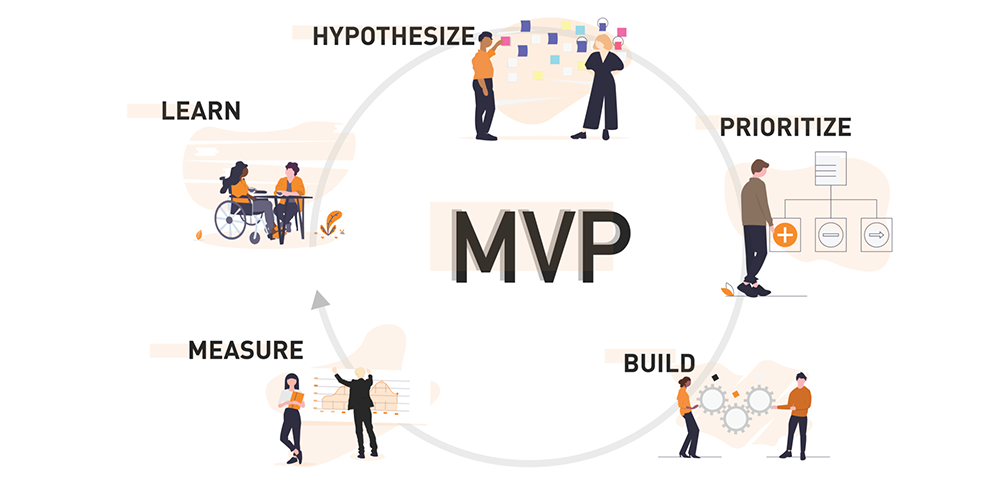Why MVP is necessary for your startup and what are the next steps if your MVP is viable?
What is MVP, and why is it necessary for all businesses?
Creating a minimum viable product, or MVP, is an essential part of any business’s journey to success. By definition, an MVP is a version of a product with just enough features to satisfy early customers and provide feedback for further development.
The purpose of an MVP is twofold: first, it allows businesses to validate their hypotheses about a product or service before investing too much time and resources into its development. Second, it provides them with valuable feedback from real users that can be used to improve the product before its official launch.
Developing an MVP doesn’t have to be a long and complicated process; in fact, it’s often best to keep things as simple as possible. The key is to focus on creating a product that meets the needs of your target market and provides them with a positive user experience.
With an MVP in hand, businesses can feel confident that they’re on the right track to creating a successful product or service. So if you’re not already using this approach in your business, now is the time to start!

How to create a minimum viable product for a web app?
Creating a minimum viable product (MVP) is essential for any web app. Here are some tips on how to do it:
1. Start by identifying your target audience and what problem you’re solving for them. This will help you focus on the features that are most important to them.
2. Keep your MVP simple and focused. Don’t try to include too many features or it will be difficult to test and iterate on.
3. Use feedback from your target audience to make improvements and evolve your MVP. Be prepared to pivot based on feedback, as this is an essential part of the MVP process.
4. Launch your MVP and gather feedback from users. Use this feedback to continue improving your product.
Creating a successful MVP takes time and effort, but it’s worth it in the end. By following these tips, you’ll be on your way to creating a great MVP for your web app.
How long did it take to build your web based startup MVP?
In today’s business world, a lot of emphasis is placed on the importance of a company’s web presence. For many startups, this means building a minimum viable product (MVP) to get their business off the ground. But how long does it actually take to build an MVP?
While there is no one-size-fits-all answer to this question, there are some general trends that can give us a good idea of the average timeframe for MVP development. According to data from Clutch, the median time frame for MVP development is between 4 and 5 months. However, 20% of respondents said it took them less than 3 months to develop their MVP, while another 20% said it took 6 months or more.
So, what are some of the factors that can impact the development time of an MVP? Here are a few key considerations:
1. The complexity of the product: Obviously, a more complex product is going to take longer to develop than a simpler one. This is because there will be more features to build and test, and more potential for things to go wrong.
2. The size of the team: A larger team can obviously get more work done in a shorter period of time than a smaller team. However, it’s important to note that too large of a team can actually lead to problems with coordination and communication, which can slow down the development process.
3. The experience of the team: A team with more experience in web development will be able to develop an MVP faster than a team with less experience. This is because they will have a better understanding of the required technologies and how to use them effectively.
4. The scope of the MVP: The scope of the MVP can also have a significant impact on the development time. If the MVP is simply a basic website or app, it will likely take less time to build than if it is a more complex product.
So, how long did it take you to develop your web-based startup MVP? And what factors do you think played the biggest role in determining that timeframe? Share your thoughts with us!
What is the next phase for my startup if the MVP is viable?
Now that you have a viable MVP, the next step is to determine the next phase for your startup. This could involve scaling up your operations, expanding your customer base, or refining your product or service. Whatever it may be, make sure to plan out your next steps carefully and ensure that they are aligned with your overall business goals. Having a solid plan in place will help keep your startup on track and ensure its success.
Contact us for more info.
